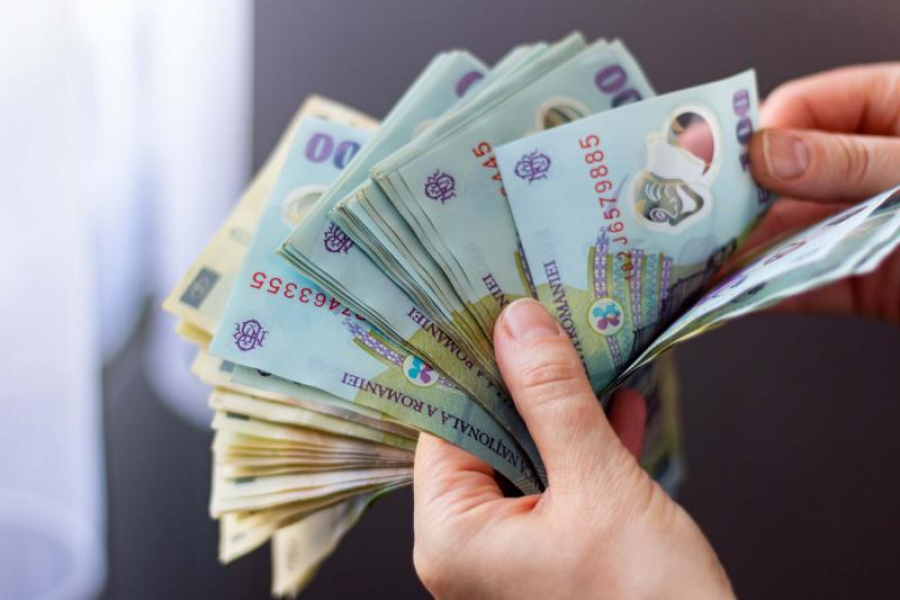Beginning with the 3rd of March 2008 have been launched the first measures of investment with a strong impact on restructuring agriculture, food industry and rural areas. These measures have conditions similar to those of the SAPARD program, are expected by most of the potential beneficiaries, and have prepared the institutional and legislative framework of implementation.
Practically, the companies who are active in agriculture and other eligible applicants can already deliver projects to be approved for the three active measures regarding investments in agriculture: in the farms, processing units and development of rural infrastructure.
Together with the approval of the National Program for Rural Development, Romania will receive from the European Union an initial advance of 3.5% of the total value allocated of about 8 billion euros, to start the first actions of financing.
About Romania:
Beginning with the 3rd of March 2008 have been launched the first measures of investment with a strong impact on restructuring agriculture, food industry and rural areas. These measures have conditions similar to those of the SAPARD program, are expected by most of the potential beneficiaries, and have prepared the institutional and legislative framework of implementation.
Practically, the companies who are active in agriculture and other eligible applicants can already deliver projects to be approved for the three active measures regarding investments in agriculture: in the farms, processing units and development of rural infrastructure.
Together with the approval of the National Program for Rural Development, Romania will receive from the European Union an initial advance of 3.5% of the total value allocated of about 8 billion euros, to start the first actions of financing.
About Romania:
- Territory: 238,000 km2 (6% of the area, the second member from size point of view – after Poland)
- GDP: 34% of the average EU-25 (the figures from 2005) (The same is <1% of total EU GDP.)
- Population: 21 million
- Rural Areas: 87.1% of the territory, and 45.1% of the population (according to the definition of those at national level). Using the standard definition of OCDE, to allow comparison with other member states, Romania appears to have a rural population much larger than average.
- Agriculture: The agriculture sector is more important than the majority of other member states, given that the 32% of the population works in agriculture and forestry, their contributions accounting for 12.1% of GDP in 2006 (the 13 , 6% to total VAL). With all this, productivity is very low (an index of this fact is the difference of 63 UMA/100 between the workforce used and the cultivated surface), and the trade deficit in the domain of food and agricultural products continues to increase (1.3 billion euros in 2005).
- In Romania agriculture is characterized mainly by its dual structure: a reduced number of legal entities, the majority of them being large commercial farms (18263 such farms with an average size of 269 hectares, the total of 34 , 5% of SAU), which means that less than 0.5% of exploitation constitute more than a third of UAA, and the remainder of 99.5% represents two thirds of UAA. Approximately 3 million exploitation, which account for around 30% of agricultural land are considered practicing exclusively subsistence agriculture.
- UAA: 14.7 million ha (61.8% of the total land). Arable land (63.9% – main crops: cereals, oilseeds, barns 33%; animal husbandry: cows, sheep and pigs organized mainly at the smaller farms.
- Forestry: 6.7 million ha (28.3% of the total land). It is characterized by fragmentation of the property after the restitution of nationalized land, which weighs heavily on management of forests.
- Food industry: more than 11000 company, which accounts for 7% of national VAL, and provides jobs for 3.5% of the working population. Only 1% of the companies have more than 250 employees, and two-thirds of these are micro-enterprises with less than 9 employees. One of the problems is essential compliance with the EU standards.
- Industry of woodworking: helps with the 3.5% of GDP and provides employment for 84000 people.
- The mountainous areas account for 30% of the national territory. Other deprived areas account for 12% of the country, including the Biosphere Reserve of the Danube Delta. Overall, the ZD account for 42% of the country (34.5% of the UAA).
- Romania has a rich natural environment, and a great biodiversity, including the Carpathian Mountains, the Biosphere Reserve of the Danube Delta, and 300000 ha of virgin forests. The natural and semi-natural ecosystems account for about 47% of the national territory. About 2.4 million ha of semi barns in the country are classified as areas with important natural value (IWT).
- Rural areas are characterized by a dispersed population, and low quality infrastructure (only 33% of residents of rural areas are connected to the water network, only 10% are connected to the sewerage system, and only 10% rural routes have a suitable quality). The basic social infrastructure (health care and education, financial and banking network, etc..) is also much less developed than in urban areas. These factors are affecting the quality of life in rural areas, preventing economic development, increasing migration from village to city, and exacerbate the problems of health and environment. The rural economy is, in large part, dependent on agriculture and forestry, alternative activities being very weakly representative, and the income levels being lower than in rural areas.
Chosen Strategy, corresponding to this profile:
According to the key challenges identified, the strategic direction of the Community (OSC), and objectives from Lisbon and Gothenburg have been laid down the following global objectives:
- Facilitation of transformation and modernization of the sectors of production and processing in forestry and agriculture, improvement of competitiveness, and insurance of environment durability;
- Maintenance and consolidation of the rural environment;
- Facilitation of the labor force movement from agriculture to other sectors, and insurance of suitable economic and social conditions for the rural population.
Global budget and percentage of EU funding UE (în EUR)
| Axis |
Total public expenses |
| Axis 1 |
3,967,311,581 |
| Axis 2 |
2,293,413,375 |
| Axis 3 |
2,473,739,880 |
| LEADER |
235,074,871 |
| Technical assistance |
376,119,793 |
| Add-ons to the direct payments * |
625,136,100 |
| Total: |
9,970,795,600 |
* Measure envisaged in the Adhesion Treaty of Bulgaria/Romania for the period 2007-2009
The general objective of the rural development program in this country
The Rural Development Program focuses on three essential provocations: the transformation and modernization of the areas of production and processing in agriculture and forestry, the maintenance and consolidation of the rural environment, and insurance of suitable economic and social conditions for the rural population.
Axis 1 – budget allocation and the main priorities:
Total public funding: 3967311581 EUR – FEADR: 3173849264 EUR (43.95% of the FEADR funds allocated on the four axes).
The main priorities within this axis:
- skills and the ability to manage will be improved through the support of vocational training, and through the offer of some consultancy services and expansion of farms;
- improvement of competitiveness in agriculture, through the conduct of investment in farms, through the support of semi-subsistence farms in order to become more viable in terms of trade, and through the improvement of infrastructure;
- restructuring and modernization of the processing and marketing of agricultural products and forest products.
Axis 2 – budget allocation and the main priorities:
Total public funding: 2293413375 EUR – FEADR: 1880598967 EUR (26.05% of the FEADR funds allocated on the four axes).
The main priorities under this axis:
- maintaining subsistence agriculture in mountainous areas and other disadvantaged areas, in order to preserve the environment, to avoid land abandonment, and solve certain problems, such as soil erosion;
- maintaining and consolidating the ecological advantages created by the traditional systems of extensive agriculture in ecosystems with important natural value, as the Carpathian Mountains in Transylvania;
- the protection of threatened bird species and their habitats;
- forestation of agricultural lands
Axis 3 – appropriation of the budget and the main priorities:
Total public funding: 2473739880 EUR – FEADR: 1978991904 EUR (27.4% of the FEADR funds allocated on the four axes).
The main priorities under this axis:
- diversification of the rural economy and the creation of jobs will be encouraged by the support of micro-enterprises, infrastructure and tourist attractions;
- the renewal and development of villages;
- Program for Rural Development Romania encourages communities to propose integrated projects, with reference to a wide range of elements of physical and social infrastructure, in order to improve the life of the villages.
LEADER – budget allocation and the main priorities:
Total public funding: 235074871 EUR – FEADR: 188059896 EUR (2.6% of the FEADR funds allocated on the four axes).
The main priorities under this axis:
- improvement of the of local good government good capacity, and promotion of local development;
- 91% of the funds will be used for the implementation of local strategies by local action groups, including cooperation projects with other LEADER groups.
For any further details, and for the evaluation of the eligibility for the investments you want to achieve in agriculture please contact us.
Cristian Terheş Ardelean
Managing Partner
Compania de Finantari CDF
Email: click here
Mobile:


